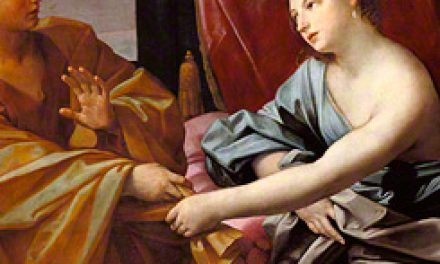
R103 A1, 1993, Tadao Takano. Gelatin silver print, 24 x 20 in. The J. Paul Getty Museum, Gift of Linda Blackwell Bentley, 2019.110.21. © 2017 Linda Blackwell Bentley. All rights reserved
How does one become the caretaker of an artist’s entire body of work? For designer Linda Blackwell Bentley, it began with an out-of-the-blue phone call from her professor and mentor, Tadao Takano. Blackwell Bentley had been one of his students three decades ago at the University of Illinois at Chicago, where Takano had taught typography and design. But the two had lost touch over the years.
“I just thought, ‘Wow, this must be karma,’” said Blackwell Bentley.
It turns out that a colleague had mentioned Blackwell Bentley to Takano, noting that she now had a successful career in graphic design. Takano called to congratulate her and reconnect, and found out they only lived fifteen minutes apart. When they met up, Takano asked to show her his art.
The images stunned Blackwell Bentley. Called cybergrams, they consisted of repeating figures, abstract shapes, and other organic forms. They were mysterious, elegant, and beautiful.
“Seeing Tad’s collection for the first time, I was so moved by the beauty of his unique process, I suggested he allow me to sort through the stack of boxes in a corner of his apartment and assemble a portfolio,” said Blackwell Bentley. “I felt the work was so important that he should be known in history.”

Tadao Takano with students. Photo courtesy of Linda Blackwell Bentley
Tadao Takano was born in 1926 in Washington. In 1942 he and his family were forced to live in an internment camp during World War II. He later joined the US Army, and was stationed in Italy. He returned to the US where he attended the Institute of Design in Chicago on the GI Bill and studied under artist Harry Callahan. In addition to his art practice, Takano taught at the University of Illinois at Chicago for over three decades. He died in 2010.
In the early 1980s, Takano set out to invent something new. He wanted to make abstract images without a camera that were different from a photogram, which is made by laying objects onto photographic paper and exposing it to light. He worked with engineer Jim Logan and filmmaker Wayne Boyer to build a robotic machine called BIGS that was controlled by an IBM 5160 computer.
In the darkroom, Takano controlled the computer and entered data, instructing BIGS to move on its X- and Y-axes. By entering a numerical algorithm, BIGS exposed gelatin silver paper to multiple versions of the same image. After exposure, Takano developed his prints in a traditional darkroom.
Takano called these resulting images “cybergrams,” and described them as “intuitive as drawing with light.” Many of the images look like they were made with ink and paint. Some are reminiscent of a stormy sky, live electrical wire, fine threads, or rippling fabric, while others feature the kind of geometric abstraction associated with the 1980s design aesthetic.

AERO 370 1987, Tadao Takano. Gelatin silver print, 16 x 20 in. The J. Paul Getty Museum, Gift of Linda Blackwell Bentley, 2019.110.9. © 2017 Linda Blackwell Bentley. All rights reserved

FISH 4100, 1989, Tadao Takano. Gelatin silver print, 16 x 20 in. The J. Paul Getty Museum, Gift of Linda Blackwell Bentley, 2019.110.17. © 2017 Linda Blackwell Bentley. All rights reserved
“Takano saw the potential for computer technology to disrupt and advance photography in very interesting ways,” said Paul Martineau, associate curator of photographs at the Getty Museum. “His unique experimentations with design and light are bold and unlike anything I had seen before.”
Following their reunion, Takano and Blackwell Bentley remained close friends, with Blackwell Bentley continuing to take an interest in Takano’s art. She would often stop by his home before taking her kids to school to sift through his archive, and soon started reaching out to museums on his behalf.
When Takano died, he left his collection in Blackwell Bentley’s care. She recently donated 25 of Takano’s images to the Getty Museum’s Department of Photographs.
“In terms of his artistic vision, well, he was prolific,” said Blackwell Bentley. “To me, he is the epitome of an artist, and I want the public to know of his genius, his invention, and the beauty he has brought to our disparate world.”

EXSA 134, 1989, Tadao Takano. Gelatin silver print, 20 x 24 in. The J. Paul Getty Museum, Gift of Linda Blackwell Bentley, 2019.110.18. © 2017 Linda Blackwell Bentley. All rights reserved
Takano’s cybergrams complement works in the Getty’s collection by other photographers who pushed the boundaries of technology, including Eadweard Muybridge’s pioneering studies of motion, Nancy Burson’s computer-generated composite portraits, as well as the recently acquired C-Project holograms by artists such as Louise Bourgeois, John Baldessari, and Ed Ruscha, among others.
Blackwell continues to be the committed steward of Takano’s prints, and it is because of her generosity that visitors to the Getty Museum will be able to admire his groundbreaking work.




Fascinating story!
I”m so very proud of you, my daughter! You have done a great deed for the future. Thanks.
Linda,
So good to hear from you. Thank you for forwarding this article. Description of how Tadao achieved these beautiful works is so straighforward and amazing. I am pleased to be reminded of the simple beauty, and the striking depth of the pieces you so generously allowed us to puruse.
Wishing you many promising avenues as you bring this artist and his remarkable artwork to the world.
This is so amazing – beautiful art that should be out in the world for all to see!